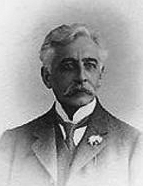

His works are marked by a deep patriotic sense, fuelled by his family ’ s Jewish origins, which led him to value the peninsular Hebrew sages who lived in the courts of Portugal and Castile until the expulsions at the turn of the century. Reading his father ’ s biography, written by his brother (A. Bensaúde, Vida de José Bensaúde , [The life of José Bensaúde] 1936), one understand s this dynamic of a family that dreams of modernity and finds its space for development in the country that welcomed them and opened the doors to success. A country that they learned to love intensely, developing the sense of patriotic service that characterised Joaquim Bensaúde and that somehow had to do with his association, in 1919, with the Sociedade Portuguesa de Estudos Históricos [Portuguese Society of Historical Studies] , directed by Fidelino de Figueiredo.
In the 1930s, Bensaúde set out to reconstruct the evolutionary line of the Portuguese Expansion process by studying two key figures, Prince D. Henrique and D. João II. Lacunes et surprise de l’Histoire des Découvertes Maritimes [Gaps and surprises in the History of Maritime Discovery] (1930) was the most significant work he published on the reign of the Perfect Prince. However, I think his interpretation of the figure of the Prince was the most striking from a historiographical point of view.
From his perspective , D. Henrique’ s warrior zeal is the same force that drove the sailings along the African coast in the 15 th century and is due to a medieval-inspired crusader spirit, devoid of material interests and with no other purpose than to dislodge the Saracens from North Africa and the holy places of the Middle East. Taking this image as a (preconceived) starting point, the explorations carried out along the west coast of Africa could have no objective other than reaching the East and liberating the Holy Land, attributing to the Prince an early plan for the Indies. Damião de Góis and Camões had already suggested this in allegorical terms, but it now took on the rationale of historical reasoning that he presented at a conference held at the Seville Exhibition in 1930, having already published the text in French the previous year ( Origine du plan des Indes [Origin of the map of the Indies] , 1929 ). Duarte Leite responded to the text with the article ‘ Talant de bien faire’ [Talent for doing well] ( História dos Descobrimentos [History of the Discoveries] , vol . I, p. 67), emphasising how Bensaúde had stopped analysing the economic interests of the Prince and the Order of Christ in African explorations. This was followed by two new letters from Bensaúde, creating a relevant (and rather polite) debate on how to contrast two ways of looking at, selecting and analysing the facts in order to create a historical discourse ( A cruzada do infante … [The infant’s cruzade] , 1942, p. 77).
This work is financed by national funds through FCT - Foundation for Science and Technology, I.P, in the scope of the projects UIDB/04311/2020 and UIDP/04311/2020.
